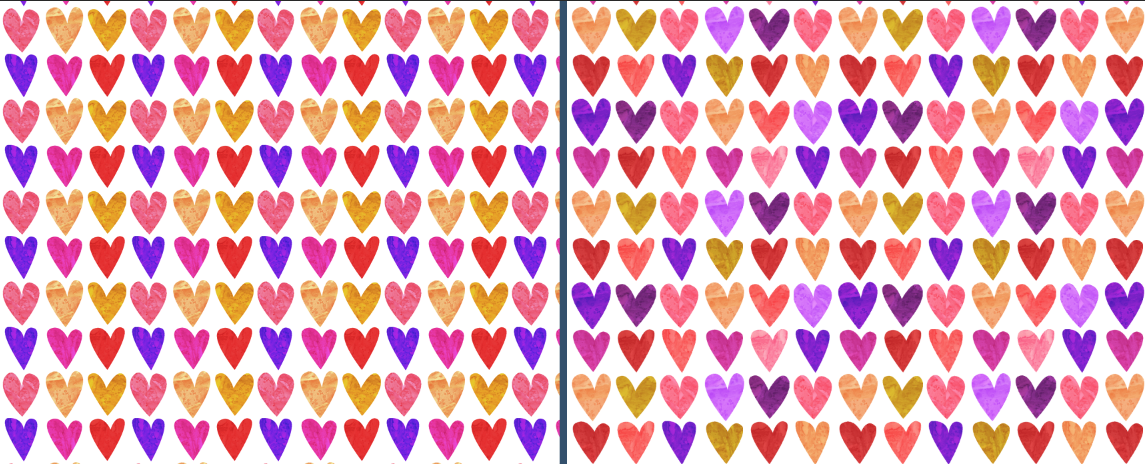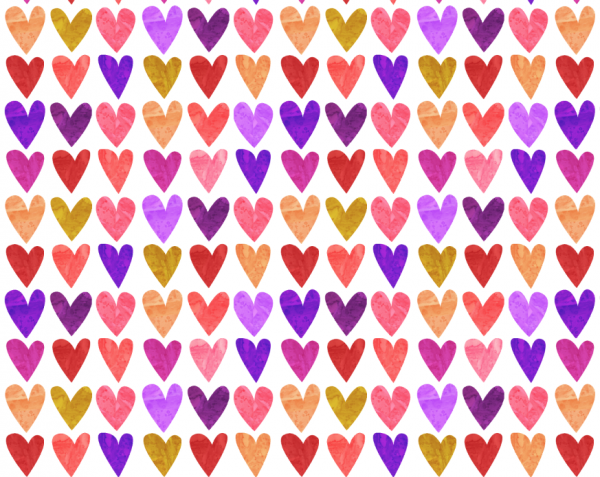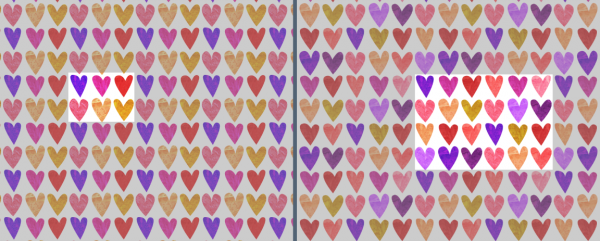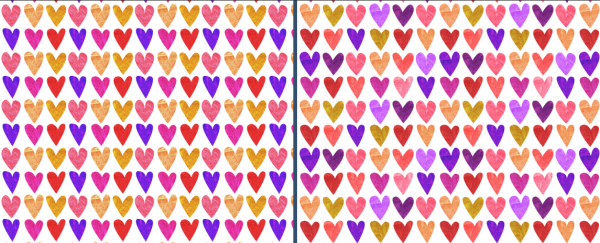I posted a tutorial last week to make your own Valentines hearts design. Today I want to talk about how you can take this basic design and make it better. In the original design tutorial, I cut and scanned 6 hearts and created a repeating pattern from that little motif, which I have outlined in blue below so it is easy to spot. Those 6 hearts repeat over and over to make the pattern.
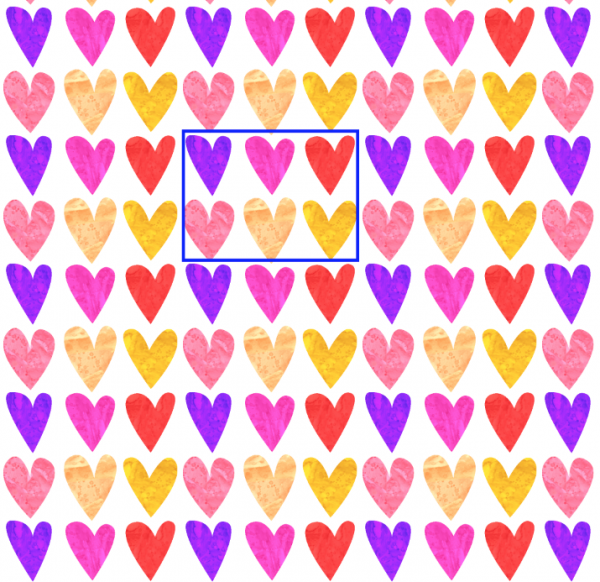
If you step back and look at this design, it works, but the purple hearts form a grid-like pattern that is pretty obvious. Your eye is drawn to that regular pattern; it gets kind of stuck and doesn’t move around the whole design. There is maybe even an illusion that the purple dominates the design a little bit.
One technique you can try to make your repeat tile have better flow and seem more dynamic is to make it bigger. For example for the repeat below, instead of 6 hearts, I made a larger canvas and copy/pasted the same hearts so I had 24 hearts instead of 6. I also added 4 more colors to my palette, taking the total from 6 to 10. I used the same method to paint and overlay the texture.
Can you find the repeat tile now? I think it’s much harder to do. There’s more variation with colors and more distance between two elements of the same color. I repeated some of the colors, so they form a less grid-like pattern.
Here are the two designs side by side, first showing the repeating tile and then the designs on their own.
Starting with 48 hearts would add even more variation to the design. I could also try varying the hearts themselves a little bit. That could be as simple as flipping a few of them horizontally or even by cutting a few more hearts at the beginning of the design before I scanned. I could also choose to have it repeat using a half-drop or half-brick pattern which would shift the tiles and add a little more variability. (You do have to plan ahead for half-drop/brick to make sure that your pattern matches up when shifted 1/2 tile.)
I often work this way when I am doing a repeat. Start first with the small version and get it close to the design look and colors I want. Then I increase my canvas size, put four copies of the design on the canvas and start to create variations. Sometimes I repeat that process one or two more times until I have a repeating pattern that I like. I check it often to see what it looks like when it is repeating and to see what stands out.


